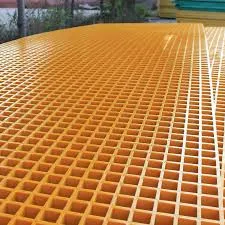
-
 Afrikaans
Afrikaans -
 Albanian
Albanian -
 Amharic
Amharic -
 Arabic
Arabic -
 Armenian
Armenian -
 Azerbaijani
Azerbaijani -
 Basque
Basque -
 Belarusian
Belarusian -
 Bengali
Bengali -
 Bosnian
Bosnian -
 Bulgarian
Bulgarian -
 Catalan
Catalan -
 Cebuano
Cebuano -
 China
China -
 China (Taiwan)
China (Taiwan) -
 Corsican
Corsican -
 Croatian
Croatian -
 Czech
Czech -
 Danish
Danish -
 Dutch
Dutch -
 English
English -
 Esperanto
Esperanto -
 Estonian
Estonian -
 Finnish
Finnish -
 French
French -
 Frisian
Frisian -
 Galician
Galician -
 Georgian
Georgian -
 German
German -
 Greek
Greek -
 Gujarati
Gujarati -
 Haitian Creole
Haitian Creole -
 hausa
hausa -
 hawaiian
hawaiian -
 Hebrew
Hebrew -
 Hindi
Hindi -
 Miao
Miao -
 Hungarian
Hungarian -
 Icelandic
Icelandic -
 igbo
igbo -
 Indonesian
Indonesian -
 irish
irish -
 Italian
Italian -
 Japanese
Japanese -
 Javanese
Javanese -
 Kannada
Kannada -
 kazakh
kazakh -
 Khmer
Khmer -
 Rwandese
Rwandese -
 Korean
Korean -
 Kurdish
Kurdish -
 Kyrgyz
Kyrgyz -
 Lao
Lao -
 Latin
Latin -
 Latvian
Latvian -
 Lithuanian
Lithuanian -
 Luxembourgish
Luxembourgish -
 Macedonian
Macedonian -
 Malgashi
Malgashi -
 Malay
Malay -
 Malayalam
Malayalam -
 Maltese
Maltese -
 Maori
Maori -
 Marathi
Marathi -
 Mongolian
Mongolian -
 Myanmar
Myanmar -
 Nepali
Nepali -
 Norwegian
Norwegian -
 Norwegian
Norwegian -
 Occitan
Occitan -
 Pashto
Pashto -
 Persian
Persian -
 Polish
Polish -
 Portuguese
Portuguese -
 Punjabi
Punjabi -
 Romanian
Romanian -
 Russian
Russian -
 Samoan
Samoan -
 Scottish Gaelic
Scottish Gaelic -
 Serbian
Serbian -
 Sesotho
Sesotho -
 Shona
Shona -
 Sindhi
Sindhi -
 Sinhala
Sinhala -
 Slovak
Slovak -
 Slovenian
Slovenian -
 Somali
Somali -
 Spanish
Spanish -
 Sundanese
Sundanese -
 Swahili
Swahili -
 Swedish
Swedish -
 Tagalog
Tagalog -
 Tajik
Tajik -
 Tamil
Tamil -
 Tatar
Tatar -
 Telugu
Telugu -
 Thai
Thai -
 Turkish
Turkish -
 Turkmen
Turkmen -
 Ukrainian
Ukrainian -
 Urdu
Urdu -
 Uighur
Uighur -
 Uzbek
Uzbek -
 Vietnamese
Vietnamese -
 Welsh
Welsh -
 Bantu
Bantu -
 Yiddish
Yiddish -
 Yoruba
Yoruba -
 Zulu
Zulu
FRP Rectangular Tube - Durable and Lightweight Fiberglass Reinforcement
Understanding FRP Rectangular Tubes Applications and Advantages
Fiber Reinforced Polymer (FRP) has emerged as a remarkable material in various engineering applications due to its high strength-to-weight ratio, corrosion resistance, and design flexibility. Among the various forms that FRP can take, rectangular tubes are particularly notable for their unique characteristics and versatility. This article explores the features, applications, and advantages of FRP rectangular tubes.
FRP rectangular tubes are composite materials made by embedding fiberglass or carbon fiber within a polymer matrix. This structure enables the tubes to achieve significant strength while retaining a lightweight profile. The rectangular shape offers several geometric advantages, particularly in structural applications where load distribution and stability are critical. They can be manufactured in various sizes and wall thicknesses, making them customizable for specific engineering needs.
Understanding FRP Rectangular Tubes Applications and Advantages
In addition to construction, FRP rectangular tubes find utility in automotive and aerospace industries. Their lightweight properties contribute to fuel efficiency and performance enhancements. For instance, when used in the chassis or body of vehicles, FRP tubes help reduce overall weight without compromising structural integrity. Similarly, in aerospace applications, these tubes are crucial for reducing aircraft weight while ensuring safety and durability.
frp rectangular tube

Another significant advantage of FRP rectangular tubes is their manufacturing flexibility. They can be produced using various methods, including pultrusion, which allows for continuous lengths and consistent quality. This manufacturability lends itself well to large-scale projects, enabling designers and engineers to create complex shapes and configurations to suit specific needs.
Furthermore, FRP materials are non-conductive and have excellent thermal properties. This makes FRP rectangular tubes suitable for electrical applications where insulation is necessary. They can also be employed in thermal management systems, thanks to their ability to withstand temperature fluctuations without degrading.
The sustainable aspect of FRP materials cannot be overlooked. As concerns about environmental impact grow, FRP provides an alternative to traditional materials like steel and aluminum. Many FRP composites can be recycled, and the energy required to produce FRP materials is often less than that of conventional metals. This positions FRP rectangular tubes as an appealing option for environmentally conscious engineering practices.
In conclusion, FRP rectangular tubes represent a forward-thinking approach to modern engineering challenges. With their unique properties and wide range of applications, they promise to play a significant role in the future of construction, transportation, and many other industries. As technology advances, the potential for further innovation in FRP materials continues to grow, paving the way for more efficient, sustainable, and resilient infrastructure and products.









